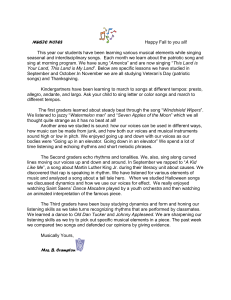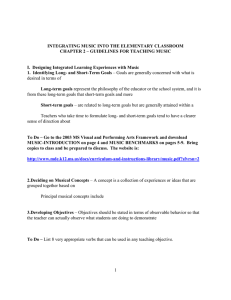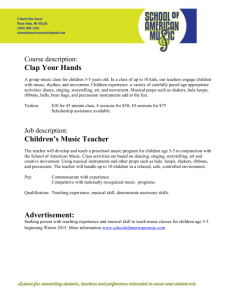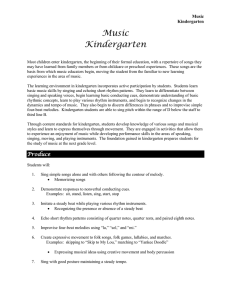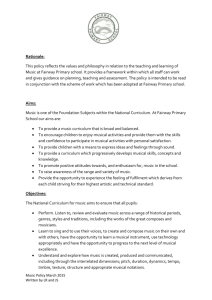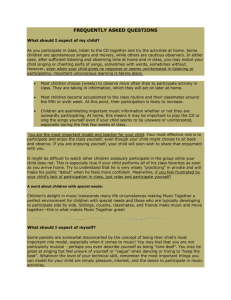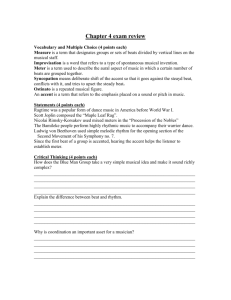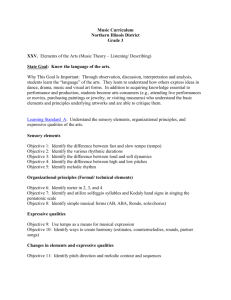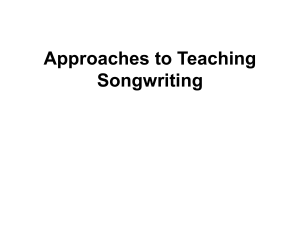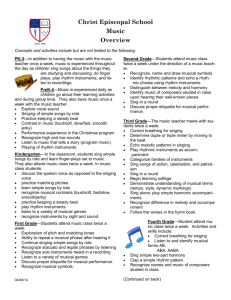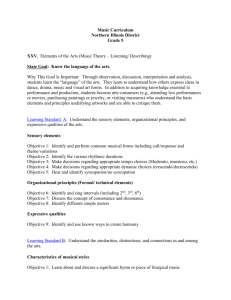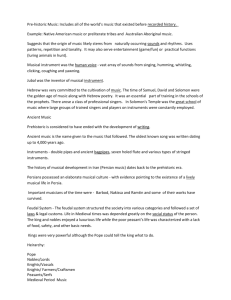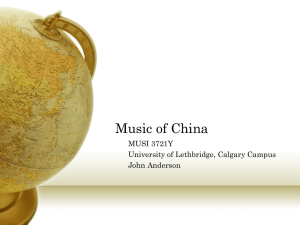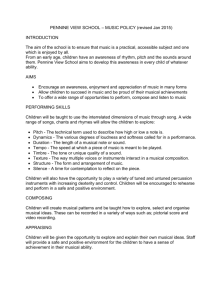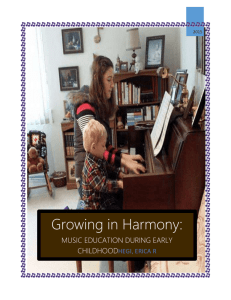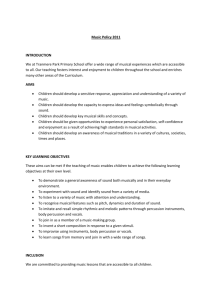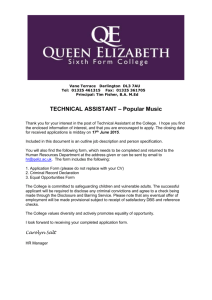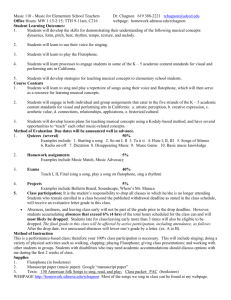Kindergarten Music Standards of Learning and Curriculum
advertisement
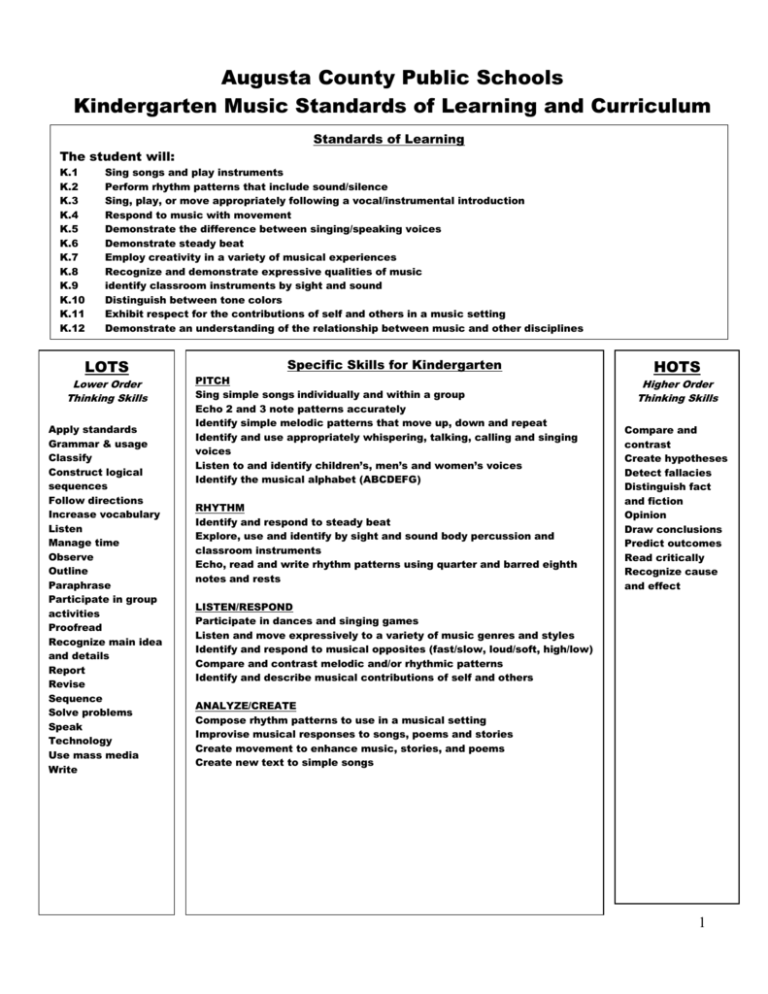
Augusta County Public Schools Kindergarten Music Standards of Learning and Curriculum Standards of Learning The student will: K.1 K.2 K.3 K.4 K.5 K.6 K.7 K.8 K.9 K.10 K.11 K.12 Sing songs and play instruments Perform rhythm patterns that include sound/silence Sing, play, or move appropriately following a vocal/instrumental introduction Respond to music with movement Demonstrate the difference between singing/speaking voices Demonstrate steady beat Employ creativity in a variety of musical experiences Recognize and demonstrate expressive qualities of music identify classroom instruments by sight and sound Distinguish between tone colors Exhibit respect for the contributions of self and others in a music setting Demonstrate an understanding of the relationship between music and other disciplines LOTS Lower Order Thinking Skills Apply standards Grammar & usage Classify Construct logical sequences Follow directions Increase vocabulary Listen Manage time Observe Outline Paraphrase Participate in group activities Proofread Recognize main idea and details Report Revise Sequence Solve problems Speak Technology Use mass media Write Specific Skills for Kindergarten PITCH Sing simple songs individually and within a group Echo 2 and 3 note patterns accurately Identify simple melodic patterns that move up, down and repeat Identify and use appropriately whispering, talking, calling and singing voices Listen to and identify children’s, men’s and women’s voices Identify the musical alphabet (ABCDEFG) RHYTHM Identify and respond to steady beat Explore, use and identify by sight and sound body percussion and classroom instruments Echo, read and write rhythm patterns using quarter and barred eighth notes and rests HOTS Higher Order Thinking Skills Compare and contrast Create hypotheses Detect fallacies Distinguish fact and fiction Opinion Draw conclusions Predict outcomes Read critically Recognize cause and effect LISTEN/RESPOND Participate in dances and singing games Listen and move expressively to a variety of music genres and styles Identify and respond to musical opposites (fast/slow, loud/soft, high/low) Compare and contrast melodic and/or rhythmic patterns Identify and describe musical contributions of self and others ANALYZE/CREATE Compose rhythm patterns to use in a musical setting Improvise musical responses to songs, poems and stories Create movement to enhance music, stories, and poems Create new text to simple songs 1


